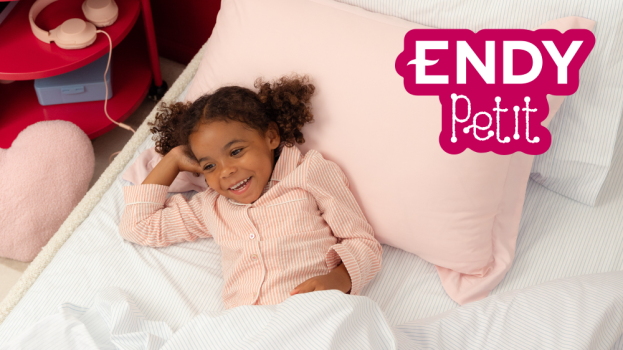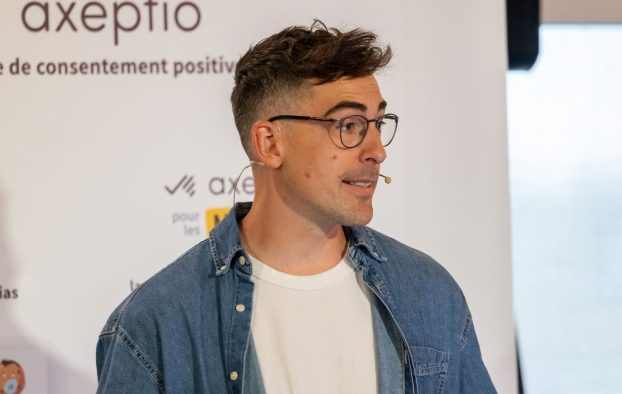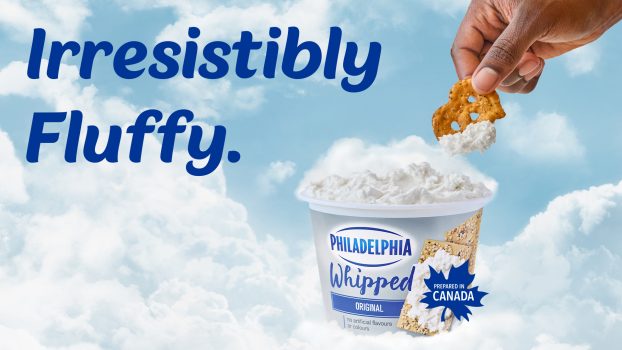No industry has the ability to dazzle like the beauty industry. Players in this market innovate at such a relentless pace that a stroll every six months or so down the beauty aisle of your average drug store is a guarantee of information overload – and that curious sensation that it’s time to go shopping again.
The problem for the movers and shakers in this field is that copycats are watching your every move. And while one brand might have great success with a new product, being first is never a guarantee that you’ll stay first.
The question for innovators, then, is how do you protect great ideas from competitors who want a piece of the action?
Innovation always pays
In spite of the competition, leading health-and-beauty brands want to innovate anyway. L’Oréal has promised its customers innovation since 1907 and a recent emphasis on research and science as depicted in its advertising has enhanced the need to fulfill that promise.
Victoria Cruz, group manager with Montreal-based L’Oréal, recently oversaw the successful launch of the world’s first two-step home hair colouring product. L’Oréal Paris’ Couleur Experte was launched this spring and already has a 7.5% market share in dollars. So far, no competitors have entered the market and the product’s popularity is growing.
In addition to leadership, Cruz cites five good reasons for being the inaugurator in what is likely to be a growing category.
First is the ability to claim an attractive marketing position – a factor usually taken into consideration by the product development team from day one. Couleur Experte opened up the market in a unique way. The product was designed as a bridge between the usual $9 hair dye and the $93+ salon visit. The result is ‘affordable luxury,’ although at $25 a pop, just barely.
At the same time, because the product was first, L’Oréal was able to define the standards of the new category – the second benefit to being first. In this case, the standards were set extremely high; so high that many mass-market manufacturers in the hair-colour category would have difficulty matching them while staying within the limitations set up by their brands.
Third, the product launch gave L’Oréal an opportunity to access effective premium in-store locations. The product still has huge displays at Wal-Mart as well as pharmacies across the country. Shelf space offered a product is calculated on the dollar value of that product. The product’s strong market share will guarantee that shelf space for some time, limiting the ability of competitors to present a comparable attack.
Fourth, being first means owning patents. For this product, L’Oréal patented both the two-tone system and the wand, similar to a mascara brush, that is used to apply the highlights.
‘This seems like a little detail,’ Cruz says, ‘but when you look at the brushes in the market for highlighting, one comes to the realization that the new brush is the perfect tool to apply highlights by yourself. And because women know how to use mascara brushes, the gesture is very natural.’
Finally, being first to market with two-tone hair colouring is likely to guarantee a loyal following for some time. Not all consumers consciously remember that a brand was first, says Cruz, but ‘consumer research proves that consumers will remember the first-mover brand if there is a consistent reinforcement of this fact after the product has been launched.’
‘Subconsciously, however, consumers do remain loyal to that brand and, even if they try imitators’ products, they will end up going back to the original one.’
Innovators protect themselves
Revlon is one of many companies that rely on constant innovation to stay ahead of the competition. ‘Our philosophy is to lead, not follow,’ says New York-based product development director Pamela Vaile. ‘Our initiatives are centred on the next new innovation, either in package or formula.’
Vaile cites the Colorstay product line as an example from the early ’90s. Colorstay offered a 16-hour-wear foundation, and Revlon was the only company making these claims at the time. Ten years later the product line is still very much alive, a fact which Vaile attributes to the enormous amount of research and development that went into the initial launch as well as the brand extensions that have followed. Colorstay nail enamels last for 10 days. Colorstay Overtime Lash Tint Mascara is the only mascara in the market that lasts for three days.
‘We’re pushing the technology, then surrounding that technology with patents to protect ourselves.’
A more recent example is the Eyeglide liquid eye shadow. The product is made of a water-based formula that dries as it is applied, creating a cooling effect and leaving behind a soft, powder. The formula is spreadable, easy to apply and it wears just as a powder shadow.
It’s an advanced formula but not one that is subject to any patents. Instead, Revlon’s approach was to identify a unique package that did not exist in the industry. The company then created an exclusive arrangement with its packaging partners to ensure that they could not market the exclusive configuration to Revlon competitors for a period of time.
Even as the exclusivity comes to an end, Revlon’s R+D team is confident that it will take competitors six to nine months to get similar products out on the market.
‘Some of our competitors do very well copying us because we have gone out first, we’ve taken the initiative to lead,’ says Vaile. ‘They get the cost savings, but it is our goal to lead in the marketplace because Revlon is a leadership brand.’
Innovators use marketing
Montreal-based Dermtek Pharmaceuticals has long worked closely with dermatologists to develop its Reversa products, a line of anti-aging creams and potions. Reversa products are perfume-free, hypoallergenic, unlikely to cause blackheads, and are without any vegetable or mineral oils that can harm sensitive skin, and the company wants customers to know.
‘Our strategy has always been to list all the ingredients present in our formulations,’ says director of marketing Maryse Noël. ‘Although we don’t indicate the concentration levels of the ingredients, our formulas become exposed to being duplicated.’
The company has other tactics to counteract this. One is a customized approach to key people – for example, giving maximum product knowledge to cosmeticians who are recommending the product, and to consumers, who have a growing appetite for details about the products that are going on their faces.
‘We also try to market the product in a unique and innovative way,’ says Noël. And therein lies the secret. There is always the risk that competitors will copy what you have, but marketers in this category know that ‘the success of a product launch does not strictly rest on its formula but on everything that goes around it as well.’
Most recently, the company worked with hot agency Taxi to produce a magazine campaign for the launch of Vitabase Skin Tone Enhancer, an oil free moisturizer in the Reversa line.
As with many companies, marketers at Dermtek have major input when it comes to product innovation. Revlon’s Vaile refers to her company’s marketing department as her ‘right arm.’
‘Their job is to analyze the need gaps which we collaborate on. We’re continually looking at where the consumer’s mind-set is, then we sit with our brand group and determine where the opportunities are for each of our brands.’
L’Oréal understood from day one that the way to own the two-tone hair-colour category would be through communications with the consumer. The company spent $4 million on the Canadian launch, working with Montreal-based AOR Marketel. The emphasis was on teaching the consumer what the new product could deliver (one of the principal costs for innovators in general) and the education efforts were intensive. They included a targeted direct-mail campaign, a mall tour of Toronto, Vancouver and Montreal, a half-hour long infomercial demonstrating the product, a Web campaign that attracted 210,000 people in just three months, and a pre-launch educational campaign targeting cosmeticians.
In the mind of today’s consumer, L’Oréal owns this category definitively. The hefty marketing shove is designed to ensure that L’Oréal will continue to do so when competitors begin to move in – if they do.
Innovators are true to their brands
A few years ago, Procter & Gamble’s Olay launched a liquid body wash. Olay Moisturizing Body Wash sustained leadership for a long time, mainly because it was the first facial care company to enter the market. Now, however, competitor Unilever’s Dove Bodycare leads the category, according to Michael Alexander, Unilever’s marketing director for the skin-care and deodorant categories.
The new product was a natural fit for Dove, which touts ‘skin so healthy it glows.’ While innovation can offer a major lead in the marketplace, Dove was able to include a similar product in its portfolio in a way that resonated with women and seemed true to the promises the brand was making.
Following the body-wash face-off, Olay and Dove are now in a similar battle with daily disposable facial cleansers. P&G lead the way with Olay Daily Facials, a product with a name that’s hard to beat (and illegal to copy) and a brand-new product that many women were willing to try. Unilever is now rolling out its own product – Dove Cleansing Pillows.
Unilever’s Alexander is confident that the ‘nutrients and lipids’ in the product will create an effect women will want more of.
‘At Dove, we’re focusing on the end benefits. The ‘skin so healthy-looking it glows’ and the ingredients we’re delivering,’ he says. ‘That’s what Dove promises in all products and Dove has a history of making promises and delivering on them.’
A large part of what will make or break Olay’s brand is whether or not consumers will believe the brand knows enough about washing to own this category. P&G is betting that consumers will. It recently took the product to the next level with Olay Daily Facials Express – a new version of the original product that doesn’t require any water.
According to P&G spokesperson Sarah Kemp, the new product embodies the company’s philosophy towards innovation. ‘We have a constant stream of new products coming into the market and we stay ahead of the competition by having that strong R+D so that our products are constantly upgraded.’
Innovation breeds innovation
When it comes right down to it, competitors are going to catch up, either by copying your product, adding to it, or creating something you wish you’d thought of first. In that case, the answer is to go right back to the start of the cycle and get something fresh in the marketplace.
Procter & Gamble is the perfect example. Three years ago the company created the tooth-whitening category virtually overnight with Crest Whitestrips. That category is now worth $350 million, but P&G isn’t the only company reaping the proceeds. Both Colgate and Unilever’s Mentadent followed with their own competitive products – with just a fraction of the marketing spend that P&G pumped into educating the consumer about the new product. But P&G now plans to launch Crest Whitestrips Supreme, a newer, faster version of the old idea.
This summer Del Laboratories’ Sally Hansen brand launched Fast and Flawless Airbrush Makeup, a first in the category. Lizanne Bertrand, Barrie, Ont.-based director of marketing, says the company has been inundated with calls from consumers who want the product.
To fend off competitors, Sally Hansen has patented the bio-active complex (a combination of vitamins and natural ingredients such as rosemary and mint) that makes the product so trendy. It has also introduced another first – a no-colour make-up that’s designed to blend with skin tones rather than match them with a pigment.
Of course, Bertrand is a realist. ‘There’ll always be people mimicking your product, especially when it’s successful. Then you go back and make it better.’
The company already has plans to introduce new shades and add-ons in 2004.
Good design avoids the ‘category vernacular’
‘One of the reasons why the cosmetics industry spends a fortune on perfume bottles is to ensure that they cannot be imitated, and to reinforce the precious nature of the product inside,’ says Chris Plewes, creative director at Toronto-based branding and design firm Anthem Group.
‘Essentially, they’re using design elements as icons that will serve as a visual device to the consumer who sees these as a representation of the brand’s unique virtues. What’s required is having the design ensure that this device is developed in a very unique and compelling way that doesn’t fall into the category vernacular.’
Plewes suggests the bottled-water category as an example of over-reliance on visual clichés – in this case, ‘cold mountains.’
‘If you devote time and energy in illustrating the category’s common elements then all you’re doing is confusing the consumer. You’re not giving the consumer reason to believe that you’re unique and worthy of a premium price point, and you become vulnerable to tier-two brands.’
Instead, Plewes suggests using innovative packaging techniques to showcase innovative products.
‘In the toothpaste category, Aquafresh has done it by printing on transparent packaging to promote a unique proposition for their ‘Extreme Clean,’ in the U.S. The product has ‘micro-active foaming action.’ The packaging clearly demonstrates that there’s something breakthrough about their product and it’s a great way to protect yourself because tier-two companies can’t afford to invest in this kind of thing.
‘If the competitor can only afford to go into cheap cardboard and they’re sitting beside this really exciting plastic package, and if you’re a shopper who’s looking for innovation as a demonstration of efficacy, then you’re gonna spend another dollar for that tube of toothpaste.’
Plewes also cites Olay as a brand that uses unique, innovative packaging. ‘Their communication on packaging and advertising follows a very intelligent hierarchy of communication – everything feeds the brand, builds confidence in the brand. It’s bold and compelling but very simple and there’s a proper balance of information. It’s carefully crafted as far as size and prominence.’
That should help Olay with new product launches. Any design elements that are connected to the brand become what Plewes described as ‘ownable’ elements. A brand with a strong set of ownable elements can easily extend itself into new products that make sense for the brand.
‘It’s a matter of preserving the brand’s core values while promoting innovation that’s going to breathe new life into the brand.’
Then again, ‘if you’re a brand that is not number one and you’re fighting for market share, and it’s a benefit-driven issue rather than a brand-driven issue, then you have to make sure that your communication is very vivid. Having a simple, very earnest presentation to your story is critical if you want the innovation to stand out.’
‘Even though health and beauty is a sophisticated category, it still has to compete in a very aggressive and bloodthirsty manner. Designers like to assume that consumers are going to suddenly change their animal instincts and take hours to shop the category and read every label endlessly. That’s unrealistic.’






















